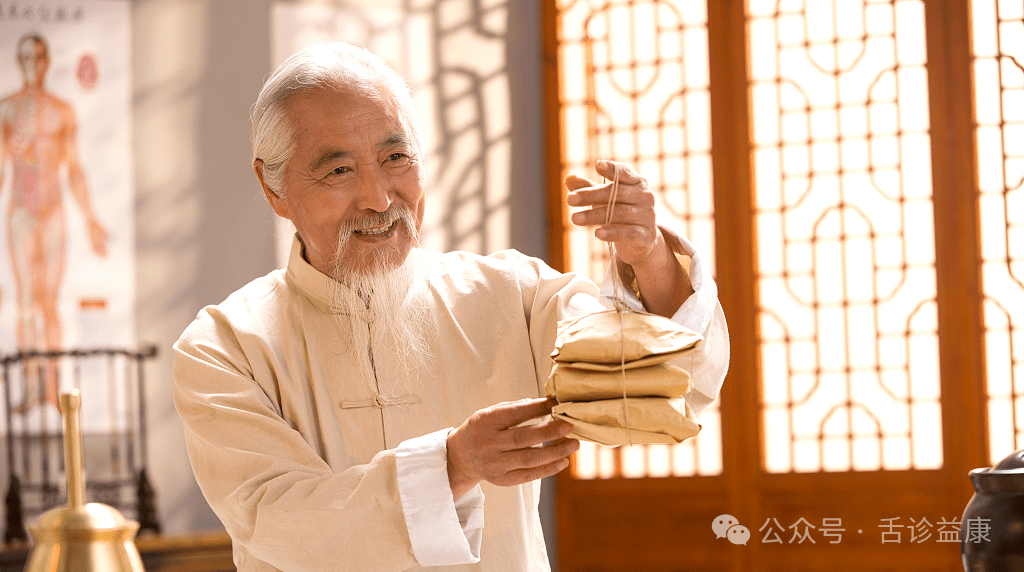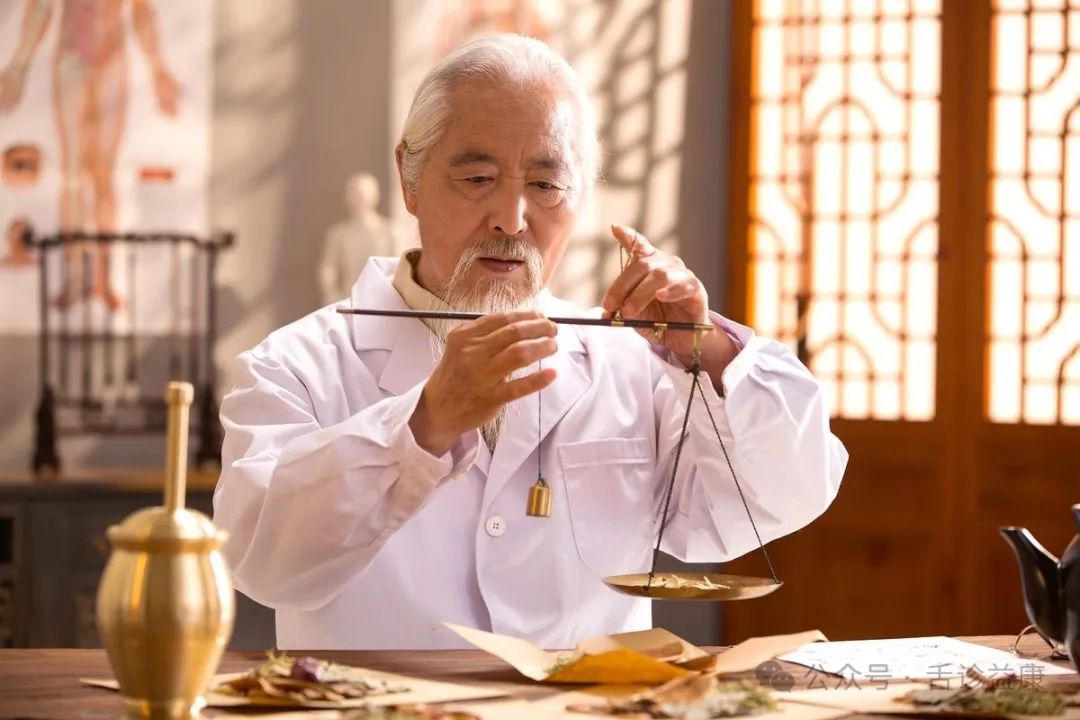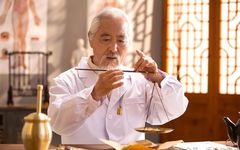

When it comes to body constitution, most people think of the nine types of constitution in Traditional Chinese Medicine (TCM). However, TCM also classifies body constitution based on the strength of Yang Qi, dividing it into: Taiyang (Greater Yang) constitution, Yangming (Bright Yang) constitution, Shaoyang (Lesser Yang) constitution, Taiyin (Greater Yin) constitution, Shaoyin (Lesser Yin) constitution, and Jueyin (Reverting Yin) constitution.
This classification helps to better understand the diseases that different types of people may develop, as well as the pathological progression. Individuals with a Taiyang constitution have abundant Yang Qi (Zheng Qi), strong resistance to disease, and their ailments are often superficial, presenting as excess or heat syndromes. In contrast, those with a Shaoyin constitution have weakened Yang Qi, lower resistance, and their diseases are often internal, presenting as deficiency or cold syndromes.
Understanding this article will clarify many questions you may have had.
1. Taiyang Constitution

Taiyang constitution is characterized by: abundant vital energy and strong resistance.
People with a Taiyang constitution can be described as full of vitality. They are energetic, positive, and have a strong energy field that attracts many people.
Generally, when pathogenic factors invade the Taiyang meridian, they encounter strong resistance from Zheng Qi, making it difficult for the pathogens to penetrate further. Therefore, individuals with a Taiyang constitution are prone to Taiyang diseases.
The symptoms of Taiyang disease mainly include: cold, fever (often high), chills, headache, body aches, sweating (or lack thereof), cough, wheezing, and dry retching. The pulse is usually floating and relaxed or floating and tight, and the tongue coating is typically a normal thin white coating.
The treatment for Taiyang disease is through methods that release the exterior, including inducing sweating, harmonizing Ying and Wei, and relieving muscle tension. Patients with a Taiyang constitution recover very easily and rarely develop other complications.
However, currently, individuals with a Taiyang constitution are quite rare, mostly seen in children and adults who are innately endowed with strong Yang Qi.
2. Yangming Constitution

Yangming constitution can be summarized in three words: solid body, abundant Qi, and rich blood. This group of people often has a loud voice, a ruddy complexion, and strong, muscular bodies; athletes or heavy laborers commonly exhibit this constitution.
A well-known character that exemplifies the Yangming constitution is Wu Song:
His image: robust physique, broad chest, eloquent speech, courageous heart, strong bones and muscles;
His appetite: can eat 3 jin (1.5 kg) of lamb in one sitting and drink 18 bowls of wine (this requires a lot of Spleen Yang to digest);
His strength: killed a tiger with his bare hands.
So, what problems do people with a Yangming constitution easily encounter?
When individuals with a Yangming constitution are exposed to external pathogens, their Zheng Qi often reacts too strongly, leading to excessive resistance and causing Yangming disease.
The symptoms of Yangming disease mainly include: high fever, thirst, profuse sweating, mental agitation, delirium, and gastrointestinal stagnation.
Commonly used herbs for regulating Yangming constitution include:
One is Da Huang (Rhubarb), a purgative herb that can expel stagnant turbid Qi; the other is Sheng Shi Gao (Gypsum), a clearing herb that can resolve trapped heat pathogens.
However, these two herbs are extremely cold and should not be used indiscriminately, as they can harm the vital energy and worsen the disease.
3. Shaoyang Constitution

Shaoyang constitution is characterized by: slightly insufficient vital energy and lower resistance compared to Taiyang constitution. However, relatively speaking, Shaoyang constitution is still quite good.
Individuals with a Shaoyang constitution generally exhibit the following characteristics:
They have an optimistic mindset, are open-minded, do not dwell on trivial matters, and have a clear mind without gloomy thoughts;
They have relatively abundant energy, able to handle daily work along with energetic children;
They may occasionally experience poor appetite or sleep but do not appear sallow;
They are not prone to dysmenorrhea, but if they are exposed to cold during their menstrual period, discomfort may occur.
However, when external pathogens invade, the resistance from the Taiyang meridian may not completely expel the pathogens, allowing them to penetrate further into the Shaoyang meridian, leading to Shaoyang disease.
The symptoms of Shaoyang disease mainly include: bitter taste in the mouth, dry throat, blurred vision, alternating chills and fever, fullness in the chest and hypochondria, reduced appetite, irritability, vomiting, and nausea.
The treatment for Shaoyang disease is through harmonizing methods. Generally, formulas containing Chai Hu (Bupleurum) are used, as it promotes the smooth flow of Qi and blood, disperses stagnation, and regulates menstruation, making it a specialized herb for clearing obstructions in the Shaoyang meridian and harmonizing Zheng Qi.
In summary, Taiyang, Yangming, and Shaoyang constitutions are collectively referred to as the three Yang constitutions. Individuals in this group generally have good physical fitness, strong resistance, and are less likely to develop severe diseases such as cancer.
Therefore, if you are innately endowed with a three Yang constitution, congratulations, you have truly started on the right foot.

Next, let’s look at the three Yin constitutions!
4. Taiyin Constitution

Individuals with a Taiyin constitution have significantly less vital energy compared to those with a three Yang constitution, and their overall or local resistance is also noticeably insufficient.
People with a Taiyin constitution generally exhibit the following characteristics:
They are particularly prone to diarrhea or chronic diarrhea;
If their skin is pale, it appears dull and lifeless; if their skin is dark, it appears sallow and darkened;
They are prone to edema, and after standing for a long time, their calves may noticeably swell;
They also lack strength and become easily fatigued after a short period of work.
Generally, many scientific workers tend to have a Taiyin constitution.
When individuals with a Taiyin constitution become ill, the essence of the problem lies in insufficient Zheng Qi. Therefore, the treatment should be warming and nourishing, such as moxibustion; cold and cool substances should be avoided, as they will exacerbate the loss of Yang Qi and be counterproductive.
5. Shaoyin Constitution

The most obvious manifestation of Shaoyin constitution is Yang deficiency.
Insufficient Shaoyin emphasizes the need to support Yang, which is the guiding principle for treating Shaoyin disease and changing Shaoyin constitution.
Clinically, individuals with a Shaoyin constitution are most prone to sudden death after catching a cold. There is an ancient saying: “In cases of cold damage, the weak are most likely to die,” referring to those with a Shaoyin constitution. In hospitals, it is common to see cases where individuals catch a cold, receive intravenous fluids, and subsequently develop acute myocarditis or acute nephritis, leading to sudden death—these are unique to those with a Shaoyin constitution, as the hand Shaoyin is the heart meridian, and the foot Shaoyin is the kidney meridian. When pathogenic factors penetrate into the Shaoyin, it can lead to either heart disease or kidney disease.
Additionally, common conditions such as stroke, hypertension, diabetes, cardiovascular diseases, kidney diseases, and tumors are often associated with Shaoyin disease, and these patients frequently have a Shaoyin constitution. In short, only individuals with a Shaoyin constitution are likely to develop numerous chronic and difficult-to-treat diseases. Moreover, patients who have not responded to Western medicine for a long time or have taken cold and cool herbs for an extended period often become Shaoyin constitution patients, and their diseases are mostly Shaoyin diseases.
To address Shaoyin disease, from the perspective of Chinese medicine, Fu Zi (Aconite) is the main herb; from the perspective of external treatment, moxibustion is the first choice. However, despite both being able to revive Yang and counteract the reversal of conditions, TCM generally recommends moxibustion, as Fu Zi is highly toxic and its dosage is difficult to control.
6. Jueyin Constitution

Individuals with a Jueyin constitution have extremely insufficient vital energy.
When external pathogens invade, the struggle between Zheng Qi and pathogenic factors puts the body in a critical state, representing the last resistance of the body’s Zheng Qi. This can lead to two outcomes: either Zheng Qi overcomes the pathogens, and the disease resolves; or Zheng Qi is weak and the pathogens prevail, resulting in severe illness or death.
Individuals with a Jueyin constitution are often prone to liver diseases, and they typically have a pale complexion, lackluster cheeks, a high nose bridge, and a slender, tall body. To treat Jueyin constitution, Wu Mei (Mume) is the main herb, as its extremely sour taste belongs to the wood element, which corresponds to the liver, and Jueyin is associated with the liver and pericardium.
From the perspective of external treatment, moxibustion is essential, as the Yin pathogens have reached an extreme level, and it is crucial to quickly replenish Yang to save the patient.
More recommendations for TCM concepts: How to open the door to health through the principle of ‘communication’, helping you stay away from diseases. Seven symptoms that indicate the onset of stomach disease! Look in the mirror at your tongue; there may be hidden dangers… Do you know the fastest herbs to clear heat? Protect your heart with three acupoints—hidden ‘guardians of the heart’ deep within the body. If you sweat a lot, traditional doctors have something to say: beware of these potential diseases! Use the power of heavenly fire to dispel cold and dampness! The wisdom of TCM health preservation is fully revealed… The secrets of tongue diagnosis: an analysis of the tongue characteristics of eight constitutions! No need to spend money on health supplements! Learn ancient wisdom, the art of abdominal massage for health preservation! “Are you experiencing excess heat?”: Revealing the distinction between ‘excess heat’ and ‘deficiency’. The incredible efficacy of TCM: learn these healing verses to easily resolve common ailments! Health secrets for young people, just a cup of tea away, the difference in constitution! Find your health preservation code through tongue diagnosis! The ‘312’ meridian exercise method—meridian unblocked, treat diseases when they arise, prevent diseases when they do not, and avoid all ailments! The ‘secret garden’ on your ears actually hides great health secrets! [Health] Is obesity becoming a serious problem? TCM methods can help you cope easily! Look at your tongue to know about liver disease; whether your liver is healthy can be seen on your tongue! [Medical principles and herbal properties] A summary of common herbal effects worth keeping! Three major misconceptions about health preservation in summer: in-depth analysis and practical advice from a TCM perspective. Clenching your fist makes it clear where the problem lies. Summer health preservation should be ‘hot’! Let’s talk about ‘hot health preservation’ in summer…

